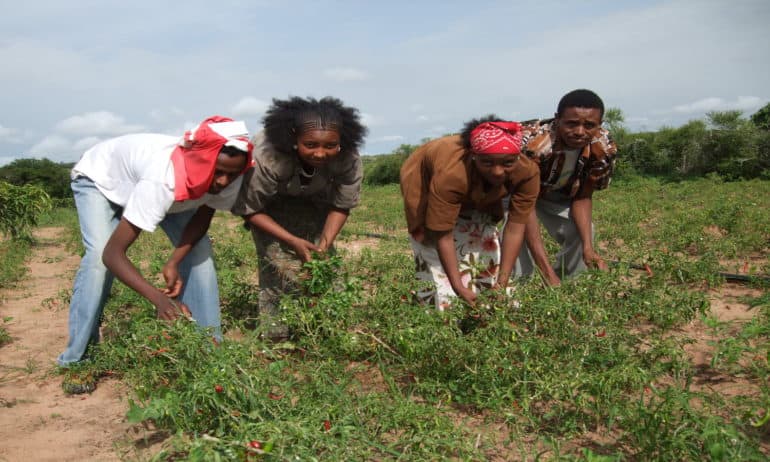Photo courtesy of More and Better.
A new report by the international network More and Better presents a global overview of investments in agriculture, revealing that more investment in small-scale sustainable agriculture is needed. The report gives an overview of some of the most important financial institutions involved in agriculture and the benefits and implications of different investment models. It also provides recommendations for inclusive and equitable future investments in small-scale sustainable farming.
“Farmers have the most important occupation in the world,” says Aksel Nærstad, International Co-coordinator of the More and Better Network.
“The U.N. Global Compact states that small-scale food producers—peasants, artisanal fisherfolks, pastoralists, hunters, and gatherers—produce 40 percent of the food which is traded and 70 percent of all food in the world. But peasants are also the largest group of the poor people in the world and of the about 800 million people who are starving. More focus on and support to improve the condition for peasants is therefore crucial.”
The report details several studies from the World Bank and U.N. Food and Agriculture Organization (FAO) demonstrating how investments in small-scale sustainable agriculture is an effective and proven way to reduce hunger and poverty in low-income countries. Despite this, public investment in agriculture has decreased considerably, with governments allocating less than two percent of their central government expenditures to agriculture between 2001 and 2015. Official Development Assistance (ODA) has increased since 2005, but is still very low, at approximately 6-8% of total ODA.
“Several reports show that support to and investments in small-scale sustainable agriculture in developing countries are by far the most efficient ways to reduce hunger and poverty,” says Nærstad. “Despite [this], very few investments are made with and for peasants. Most of the commercial and public investments in agriculture go to large-scale unsustainable farming.”
According to the Technical Centre for Agricultural and Rural Cooperation, less than a quarter of the financial needs of small-scale farmers in the global South are being met.
“Credit provided by informal and formal financial institutions, as well as value chain actors, currently only meets an estimated US$50 billion of the more than US$200 billion need for smallholder finance in the regions of sub-Saharan Africa, Latin America, and South and Southeast Asia,” the report highlights.
Based on these findings, a list of recommendations for governments, financial institutions, and civil society for future investments schemes in agriculture is provided. The report suggests that at least 10 percent of the total ODA from high-income countries should be devoted to agriculture, prioritizing small-scale sustainable and agroecological agriculture programs. Governments should work in close coordination with food and farming organizations to ensure that investments effectively benefit local communities, in particular women and youth. New schemes should pay particular attention to adapting and mitigating against climate change through sustainable agriculture methods and protecting farmers’ rights.
Increased public and private investments in small-scale sustainable agriculture can help reduce hunger and poverty and help transform the food and agriculture system.













